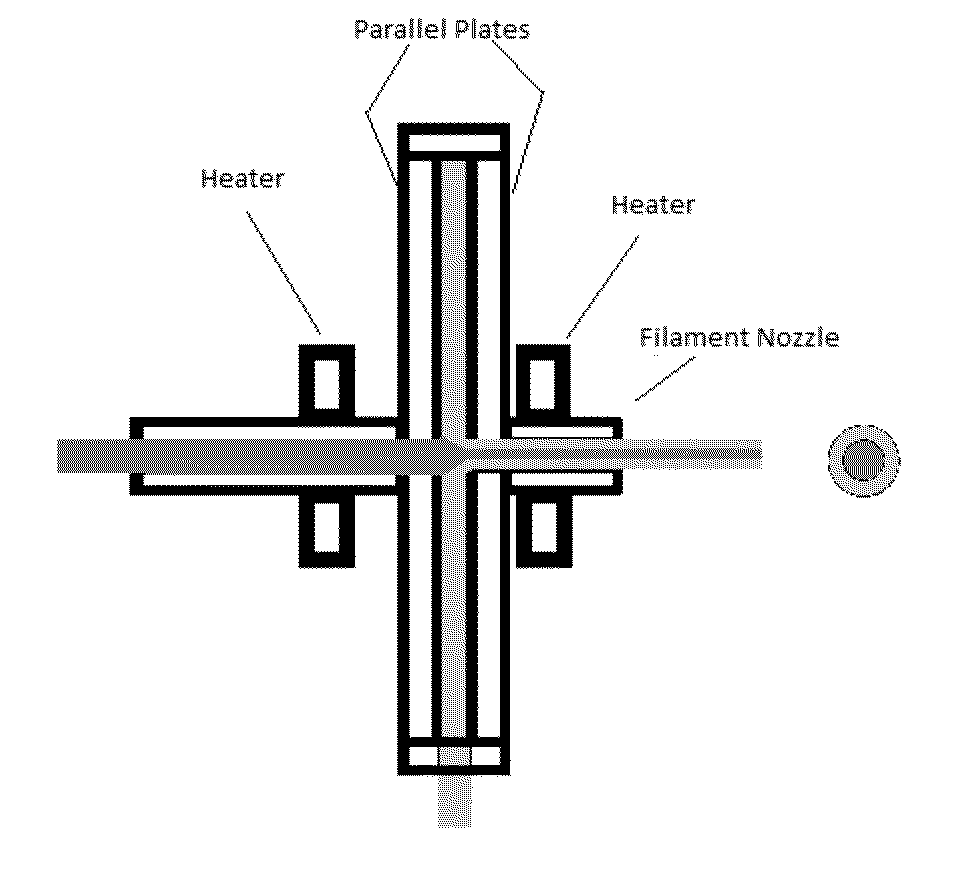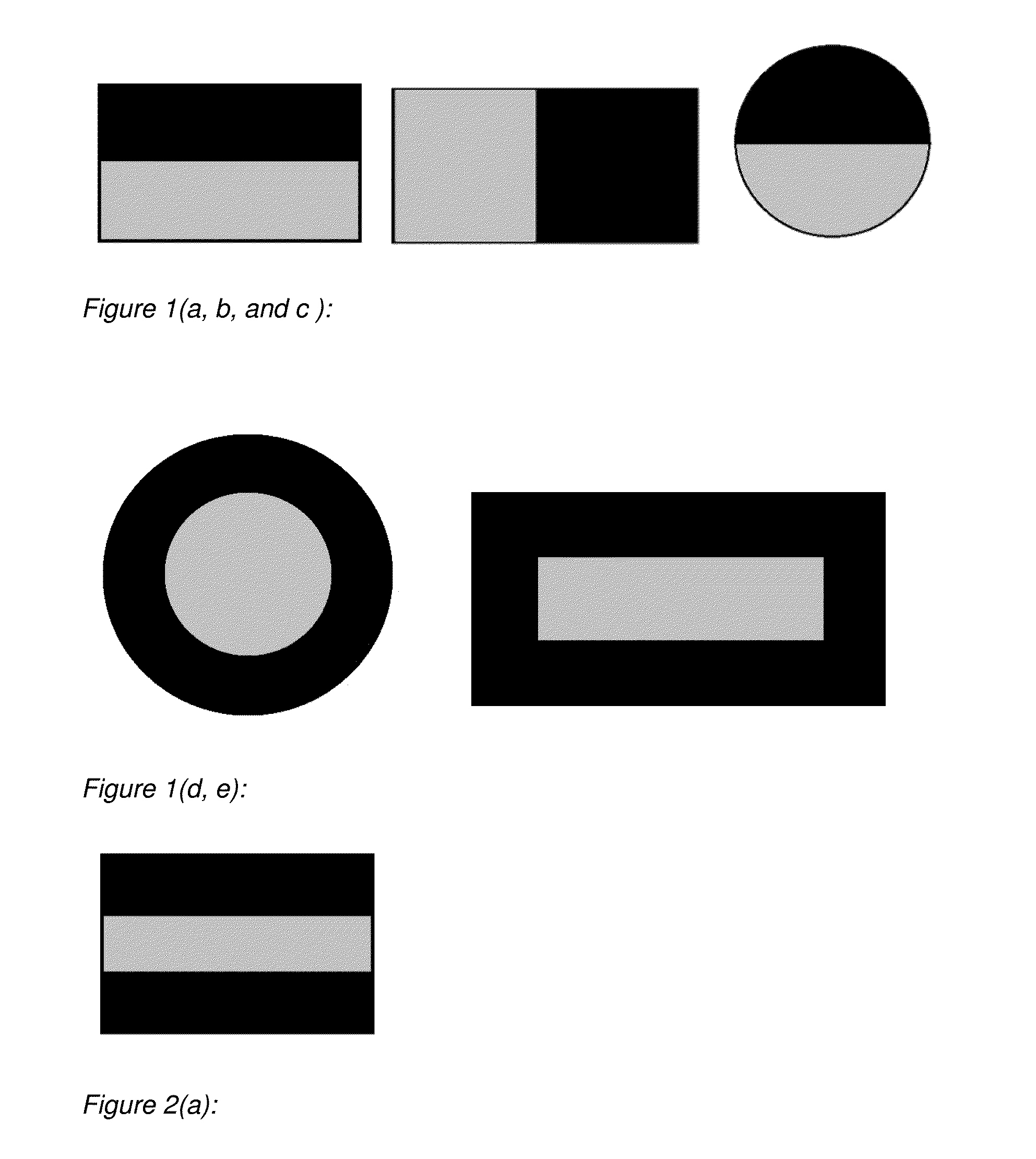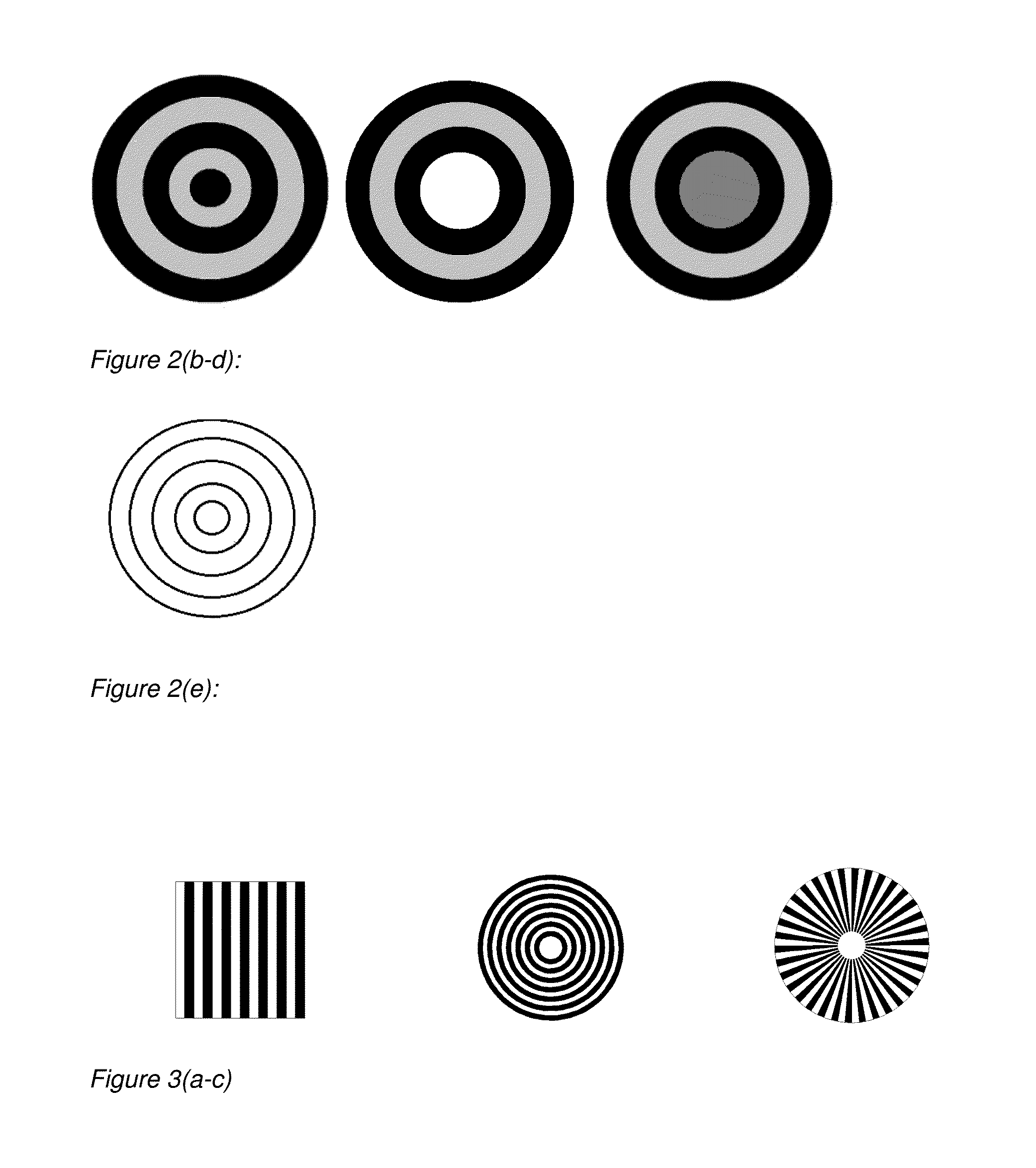Coextruded, multilayer and multicomponent 3D printing inputs
- Summary
- Abstract
- Description
- Claims
- Application Information
AI Technical Summary
Benefits of technology
Problems solved by technology
Method used
Image
Examples
Embodiment Construction
[0135]The present disclosure is generally directed towards to 3D printer inputs including filaments comprising separated layers or sections. These inputs particularly including filaments may be prepared by coextrusion, microlayer coextrusion or multicomponent / fractal coextrusion. As will be understood, the various diagrams, flow charts and scenarios described herein are only examples, and there are many other scenarios to which the present disclosure will apply.
Coextrusion
[0136]Coextrusion is the extrusion of more than one material or layer simultaneously. Materials can be layered together to form an extrudate with each material forming a portion of the cross section. Each layer can be any size or in any position relative to other layers. Some simple two layer products can be seen below in FIG. 1(a-e). These products can have layers in a flat orientation (FIG. 1(a-c)) or wrapped around themselves (FIG. 1(d,e)), or any combination of these orientations.
[0137]The input comprises two o...
PUM
 Login to View More
Login to View More Abstract
Description
Claims
Application Information
 Login to View More
Login to View More - R&D
- Intellectual Property
- Life Sciences
- Materials
- Tech Scout
- Unparalleled Data Quality
- Higher Quality Content
- 60% Fewer Hallucinations
Browse by: Latest US Patents, China's latest patents, Technical Efficacy Thesaurus, Application Domain, Technology Topic, Popular Technical Reports.
© 2025 PatSnap. All rights reserved.Legal|Privacy policy|Modern Slavery Act Transparency Statement|Sitemap|About US| Contact US: help@patsnap.com



